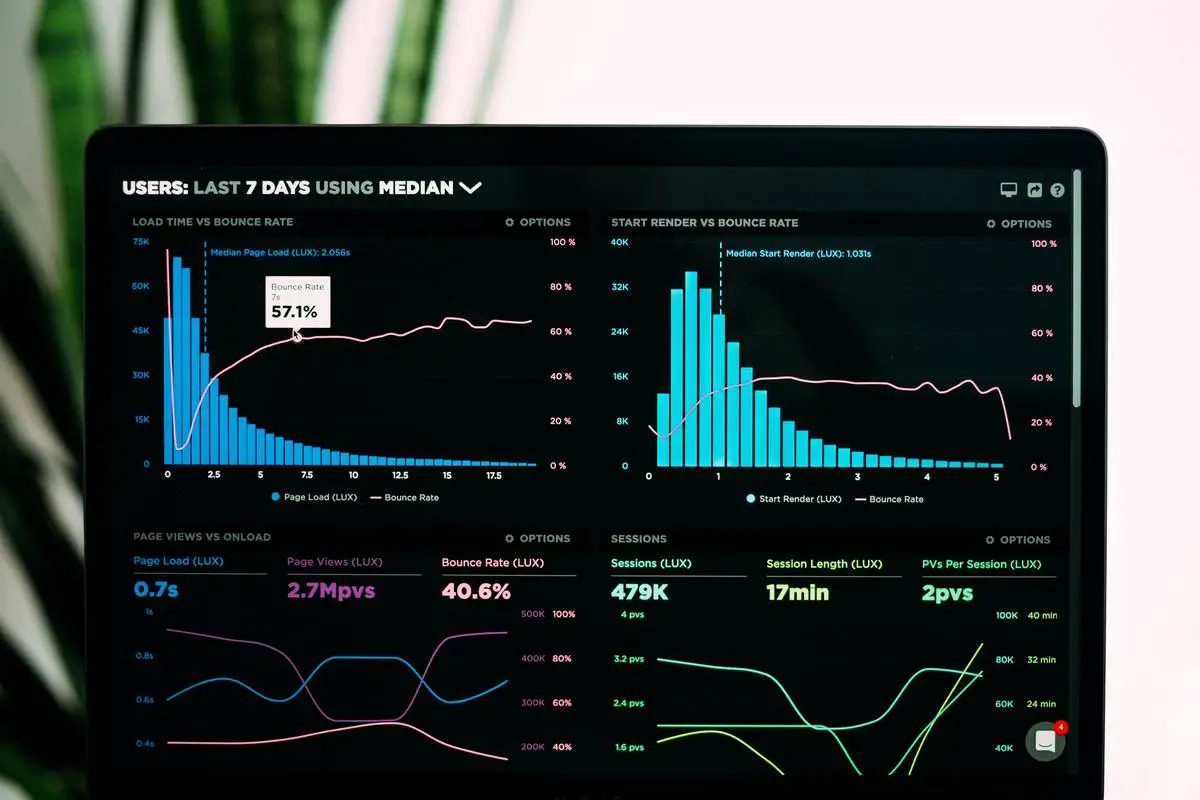Ubiquitous yet often overlooked, data forms an integral part of our professional, academic, and personal lives. Pivotal in this vast sea of data is ‘Critical Data’, whose importance is paramount in decisions that shape businesses, scientific endeavors, and even daily life choices. This discussion highlights the concept and significance of critical data, putting into perspective what qualifies as critical data and the crucial role it plays across multiple fields. Our exploration will delve into the myriad aspects and implications of critical data, ranging from its diverse types and efficient management to the sway of technologies like AI and Big Data, and finally, the ethical and legal issues intertwined with it.
In this article:
- Understanding the Concept of Critical Data
- Types of Critical Data
- Critical Data Management
- Legal and Ethical Issues in Critical Data

Understanding the Concept of Critical Data
Understanding the Concept of Critical Data
Critical data refers to the essential information required for the successful operation of a business or organization. This data is usually necessary for maintaining the organization’s key performance indicators, making informed decisions, and ensuring the attainment of business objectives. It includes data pertaining to customer transactions, vendor details, product inventories, employee information, business reports, financial statements, and strategic plans, among others. It is uniquely considered invaluable and irreplaceable.
What Defines Data as Critical
Not all data is critical. Data becomes deemed as critical depending on its strategic value to the organization, its relevance to operational efficiency, and the consequences that may arise from its loss or corruption. A few factors playing a major role include informativeness, exclusivity, necessity, and vulnerability. Critical data should provide strategic information for decision-making, be exclusive to the organization, be necessary for operations or compliances, and be vulnerable to loss, theft, or corruption.
Implication of Critical Data in Businesses and Academics
In the world of business, critical data holds a significant value. Businesses use this invaluable resource for a variety of purposes, such as making strategic decisions, enhancing operational efficiency, measuring performance, and predicting future trends. Any loss or corruption of this data may lead to financial losses, operational disruption, strategic missteps, and even severe legal and reputational repercussions.
In academia, critical data is similarly vital. It is used for research purposes, guiding institutional strategies and decisions, supporting student outcomes, and ensuring compliance with educational standards and regulations. Without access to accurate and reliable critical data, academic institutions could suffer from reduced funding, lower student success rates, and loss of accreditation.
Critical Data in Everyday Life
Daily life also isn’t untouched by critical data. From medical records needed for health management, to personally identifiable information used in various transactions, and consumer behavior data utilized for personalized marketing, daily life revolves around the usage of different sets of critical data. The loss or misuse of such data can have serious consequences, including identity theft, privacy breaches, or inadequate health care.
Prudent Management of Critical Data
Comprehensively managing critical data is essential in upholding its confidentiality, integrity, and availability. This multifaceted task encompasses classifying the data according to its criticality, routinely making data backups, and enacting strong protective measures. Additionally, having a comprehensive disaster recovery strategy in place is equally important. Compliance with pertinent data protection legislations, conducting regular audits, and endorsing effective data management protocols are all part of managing critical data responsibly. Accomplishing these steps ensures not only the functionality of an organization but also fosters trust amongst its stakeholders.

Types of Critical Data
The Implication of Business Critical Data
Business-critical data, as implied by the term, is crucial for a business’s continuation and survival. This encompasses the vital information and related process that must be safeguarded to permit a company’s uninterrupted operation even when faced with adverse events. Key elements usually comprise financial records, client data, intellectual property, and blueprints for strategic planning. To illustrate, a retail organization experiencing a data breach from a cyber attack due to failure in securing their customer database could face severe reputational and fiscal damage. Thus, ensuring the security of such business-critical data is of utmost importance.
Personally Identifiable Information (PII)
Personally Identifiable Information, or PII, includes any data that can be used to identify a specific individual. This could range from basic details such as a person’s name, email address, and phone number to more sensitive data such as social security numbers and bank account information. An instance of PII in real life could be seen when applying for a bank loan—the application process requires the applicant to share their name, date of birth, and social security number.
Sensitive Personal Information (SPI)
Sensitive personal information (SPI) is a subset of PII that carries an even higher risk if disclosed. SPI includes data such as medical records, biometric data, racial or ethnic origin, religious beliefs, and financial information. A hospital patient’s medical history would be considered SPI as would the financial data users share with online banking services. Protecting SPI is crucial to prevent identity theft, fraud, and other forms of cybercrime.
Password Data
Another significant category of critical data is password data. This includes not just the passwords that individuals use to secure their personal and professional online accounts, but also the additional security measures in place such as two-factor authentication codes, security questions, and biometric data. An example of password data could include the numerical code you use to unlock your smartphone or the face ID used to secure your device – if such data were compromised, hackers could gain unauthorized access.
Government and Municipal Data
Governments at all levels—local, state, and federal—hold vast amounts of critical data. This includes infrastructure data, tax records, social service records, and public health data, among others. For instance, a city government may hold data on the locations of utilities like water and sewer lines – unauthorized access or disruption could potentially result in havoc.
Intellectual Property (IP)
Intellectual property, or IP, is another form of critical data, particularly for businesses and educational institutions. IP includes patents, proprietary research, copyrighted material, and trade secrets. A technology company, for example, may have patented a unique manufacturing process—this is the IP that gives them an edge over competitors and it is critical to their success.
Recapping, critical data takes many shapes and encompasses a variety of sectors. Irrespective of its nature, it holds paramount stakes and necessitates stringent protection to thwart financial losses, legal problems, identity fraud, and so forth. Here, we included instances like business-critical, Personally Identifiable Information (PII), Sensitive Personal Information (SPI), password data, government and municipal data, as well as Intellectual Property (IP). Note that these are just a handful of examples within the broad spectrum of what can be deemed critical data.

Critical Data Management
Deciphering Critical Data
Also referred to as high-value data, critical data is, in essence, integral to the smooth operation and prosperity of a business or institution. Whether it’s a healthcare facility, a financial institution, or an educational institution, all possess a collection of digital assets. The compromise, loss, or improper use of these assets could result in severe ramifications. These assets can range from client information, financial documents, confidential research, internal correspondence, to student scores. The intensity of prospective damages underlines the need for advanced data management strategies for securing this crucial data.
Data Storage and Security
Ensuring the safety of critical data begins with secure storage. This process involves strategies such as data tiering, where data is sorted based on its importance. Highly valuable data could be stored in Tier 1 storage systems, which offer reliable and faster accessibility. Alternatively, less critical but necessary data may most efficiently be housed in more economical Tier 2 or Tier 3 systems.
Security is another vital aspect of critical data management. Protecting the confidentiality, integrity, and availability of data is the crux of the matter. This can be achieved by implementing robust security procedures like firewalls, encryption, two-factor authentication, and backups.
Data Analysis
Once the data is securely stored, it’s not enough to just let it sit there. This is where data analysis comes in. By utilizing analytical tools and methods, valuable insights can be extracted from the data. For instance, a business might spot trends that could help it outperform its competitors, or a hospital may identify inefficiencies in its processes. The real value of data comes from understanding and leveraging it to make better decisions.
Designing a Critical Data Management Strategy
A comprehensive critical data management strategy includes elements such as strict access controls, efficient storage methodologies, routine data audits, and implementing a robust disaster recovery plan. The strategy should be well documented and communicated across the organization to ensure every individual understands their role in preserving and protecting critical data.
Further advancements in the field have seen the integration of artificial intelligence and machine learning technologies into critical data management. These innovations have allowed for more automated and sophisticated data analysis, faster detection of security threats, and improved efficiency in data storage. Companies that master the art of managing critical data can gain a substantial advantage, as this asset is a key driver in decision-making and strategy development.
» Read this article: What is an EULA?
Effective management of critical data necessitates vigilance, foresight, and adaptability. This is particularly true in our fast-evolving digital landscape, where data threats are continually changing. The ongoing process involves mapping out the value of data, understanding the inherent risks, and devising strategies to mitigate these risks.

Photo by lukechesser on Unsplash
The Role of Big Data and AI in Critical Data
Defining Critical Data
Critical data designates the indispensable information required for an organization’s operation, compliance, and competitiveness. Such data encompasses an extensive range including corporate financial records, intellectual properties, customer data, research and development records, strategic planning documents, and more. When such critical data is lost or compromised, it can lead to substantial business disruption, significant financial loss, and severe damage to the organization’s reputation.
How does Big Data Contribute to Critical Data?
Big data can contribute to the generation and management of critical data by providing organizations with the ability to derive value from a variety of data types and sources including structured, unstructured, and semi-structured data. By applying big data analytics techniques, organizations can detect patterns and trends, generate insights, and make informed decisions, thereby adding to their collection of influence-making critical data.
Big data also enables effective management of critical data. With ever-increasing volumes of data, traditional methods for data storage, processing, and analysis are no longer sufficient. Big data technologies provide scalable and efficient solutions for handling large volumes of data, and they do so with speed and accuracy. Hence, big data plays a pivotal role in not only creating critical data but also in managing it effectively.
The Role of AI in Critical Data
Artificial Intelligence (AI) is instrumental in analyzing and securing critical data. AI techniques like machine learning and deep learning can analyze vast volumes of data rapidly and with a higher degree of accuracy than human analysis. For example, AI algorithms can analyze customer behavior and predict future trends, thereby helping organizations make data-driven strategic decisions.
AI also plays a crucial role in securing critical data. Cybersecurity threats are becoming more sophisticated, and traditional security measures are often unable to keep pace. AI can continually analyze system behavior and detect anomalies that may signify a security breach. Also, machine learning algorithms can ‘learn’ to identify new strains of malware and other ever-evolving cyber threats, helping organizations protect their critical data.
Application of Critical Data across Various Industries
Big data and artificial intelligence play a pivotal role in the management and analysis of critical data across numerous sectors, such as healthcare, finance, manufacturing, education, and more. Consider the healthcare sector, where patient health records, which constitute critical data, can be analyzed using AI and big data to detect trends and predict health outcomes. In the financial sector, transactional datasets can spur the detection of fraudulent activities while protecting assets and maintaining regulatory compliance.
Therefore, it is evident that big data and AI are essential in the generation, management, analysis, and protection of critical data within each sector. These technologies drive strategic decision-making processes and operations within forward-thinking organizations. By harnessing the power of these progressive technologies, businesses across different sectors can better comprehend their critical data, leading to improved protection and utilization of this valuable asset.

Legal and Ethical Issues in Critical Data
Delving Into the Nature of Critical Data
Critical data is information of paramount value to an organization due to its sensitivity and confidentiality. It encompasses a broad range of data categories such as personal employee or customer information, intellectual property, financial reports, and strategic plans, amongst others. The inadvertent disclosure of such data could induce significant harm to the organization. Therefore, the protection of critical data is essential for maintaining operational stability, fostering growth, and upholding compliance with a myriad of international, national, or industry-specific regulations.
Legal Implications in Critical Data Handling
The management of critical data is guided by various laws intended to secure and protect this sensitive information. The General Data Protection Regulation (GDPR) and the California Consumer Privacy Act (CCPA) are two such laws that have had profound effects on critical data management.
GDPR came into force in 2018, and it has transformed the data protection landscape globally. It is focused on protecting the privacy of European Union citizens by giving them control over their personal data, and it stipulates stringent conditions for the collection, storage, processing, and sharing of such data. Failure to comply with GDPR can result in hefty fines for organizations, up to 4% of their annual global turnover or €20 million, whichever is higher.
On the other hand, the CCPA gives California residents the right to know what personal data businesses are collecting about them, why they are collecting it, and who they are sharing it with. It also gives them the right to deny the sale of their personal details and the ability to sue businesses that fail to uphold the law.
As a result of these laws, organizations are required to introduce measures to protect critical data, such as encryption, pseudonymization, or anonymization.
Ethical Dilemmas in Data Privacy and Handling
While laws provide the basis for protecting critical data, they do not cover all the ethical questions that arise in its management. The significant growth of data-driven businesses has led to practices such as addictive design, surveillance capitalism, non-consensual data sharing, and discriminatory profiling. Each of these practices presents an ethical conflict that needs to be addressed by organizations handling critical data.
Ethical dilemmas in critical data handling also arise when organizations have to balance between innovation and privacy. For instance, businesses that rely on big data analytics might interfere with individuals’ privacy rights in their quest to gain insights and improve their products or services. Additionally, breaches of critical data can lead to reputational damage, loss of customer trust, and severe financial consequences.
Consequently, organizations need to develop ethical guidelines that go beyond legal compliance. These guidelines should prioritize transparency, consent, accountability, and fairness in all data-handling processes. They should also clarify how the business collects, stores, and uses data while respecting the privacy rights of individuals.
In conclusion
The legal and ethical handling of critical data is a top priority for all organizations. With the implementation of laws like GDPR and CCPA, businesses must ensure compliance to avoid legal repercussions. Moreover, the rise of ethical dilemmas in data privacy and handling requires a proactive approach to developing ethical guidelines that foster transparency, consent, and accountability.

Whether we realize it or not, data, and particularly critical data, permeates every aspect of our lives. It influences business operations, academic research, and personal decisions, with implications ranging from minor inconveniences to drastic global impacts.
The way we handle this information – store it, analyze it, secure it – plays a monumental role not only in its preservation but also in ensuring that it serves its purpose without infringing on people’s rights or ethical boundaries. Therefore, a comprehensive understanding, responsible management, and judicious usage of critical data serve as necessary tools in navigating this increasingly data-driven world, ultimately contributing to efficiency, integrity, and innovation in various sectors.
